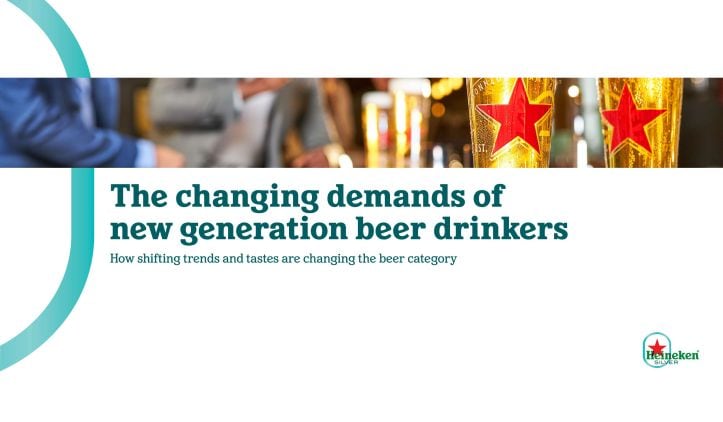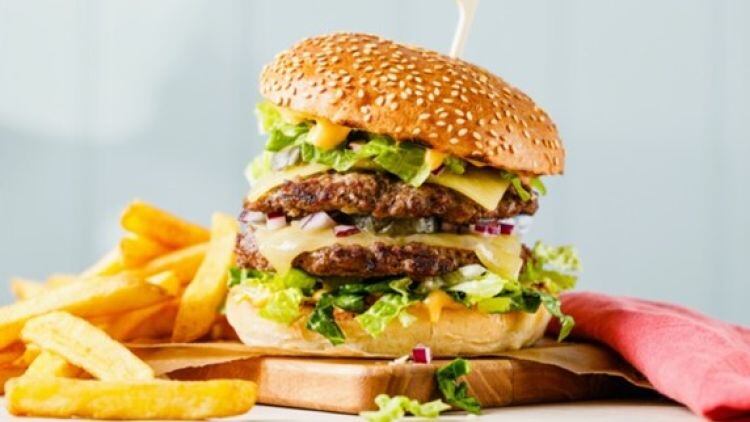They are also the predominant force looking for innovation in no and low alcohol beer. The report examines the changes in the beer industry over the past few years and what your pub should do to adapt.
The report examines the drinking habits of UK consumers, with a particular focus on Generation Y and Z (ages 18-34). With 66% drinking at least one beer on two or more occasions per week[1], there are numerous opportunities for your pub to align with the tastes of younger generation beer drinkers to drive sales. Moving away from classic lager and into more premium beers, such as Heineken Silver or Birra Moretti, as well as increasing the selection of no and low alcohol options can attract younger drinkers. Making sure you continue to stock a range of craft beers – for example Beavertown and Brixton – will also appeal further to the Gen Y & Z market.
Premium lager has become a key driver in the market, having almost doubled in value share in the past five years[2]. Analysis from the Heineken Beer Report shows this is likely to continue, with premium brands set to see major gains. Generations Y and Z are the main drivers behind this acceleration in growth – bolstering volume share by 5.8% between 2019 and 2021[3]. Partly a result of greater confidence to visit pubs and bars during reopening in 2020 and 2021, but also these younger drinkers tend to consume fewer classic lager brands and instead turn their attentions to more premium beers, such as Birra Moretti.
The growth of no and low alcohol in recent years has also provided a huge opportunity for the industry, the report shows. With 70% of consumers trying to live healthier[4], no and low’s value has grown 22.5%, and now a third of consumers have said that they would drink no and low alcohol beer[5]. Generations Y and Z are again driving this growth, with 46% drinking less alcohol[6]. When looking to attract Gen Y and Z spend, offer a high-quality selection of low and no alcohol beers, and ensuring these brands are visible at the bar or point of purchase and on drinks menus.
Craft beer has remained a strong segment within the category. While growth wasn’t as consistent as other beer segments, total value sales increased from 5.3% in 2017 to 7.8% in 2021[7]. This steady performance is largely due to bigger breweries growing their share of the market, particularly over the past two years when they were able to give more support to pubs. Additionally, on returning to the pub consumers sought out trusted brands, with the likes of Beavertown and Brixton benefiting. Grow craft beer sales by building a range around these entry-level options – on draught if sales volumes allow – then adding more unique styles of craft beer in packaged formats to offer a point of difference.
It's clear from the report that Gen Y & Z drinkers are more interested in variety than their older peers. Beer Report research shows that over half sampled a new beer in the last three months[8], with 25% preferring more lighter-style beers, and a further 49% desiring more premium options, such as Heineken Silver[9]. In fact, light lager is under-priced in the on-trade and stockists are missing out on the opportunities of premiumisation. Customers currently perceive light lager as being priced too low to be considered premium, with over two thirds of stockists serving light lager at just 10p more on average per pint than the entry level lager on the bar[10], leading them to miss out on sales. Had light lager premiumised at the same rate as continental lager, the market would be worth an additional £40m[11]. Heineken Silver taps into the growing demand for lighter tasting, premium lager, driven by next generation beer drinkers, therefore trading customers up into a new price point worth over £100M to the market[12].
Heineken UK on-trade category and commercial director Charlie Fryday said: “The level of premiumisation within the beer category has continued to increase as people drink less classic lager and consumer fewer, but better, beverages. This is also driving the moderation trend and a spike in Now and Low Alcohol products as younger drinkers seek to lead a healthier lifestyle.”
The Beer Report shows the immediate success of the beer category lies within three strong-performing segments: premium, no and low alcohol and craft, all showing growth in recent years. As these segments become more popular among younger drinkers, it’s important to adapt to the changing trends to attract the next generation of drinkers.
Click here to download the Beer Report.
[1] KAM Media Beer Drinking Habits January 2022
[2] CGA Strategy 1 Jan 2022
[3] CGA Strategy 1 Jan 2022
[4] CGA No/Low Report 2021
[5] CGA No/Low Report 2021
[6] KAM Media Beer Drinking Habits January 2022
[7] CGA Strategy 1 Jan 2022
[8] KAM Media Beer Drinking Habits January 2022
[9] KAM Media Beer Drinking Habits January 2022
[10] CGA Strategy 11 September 2021
[11] CGA Strategy 11 September 2021
[12] CGA Strategy 11 September 2021




